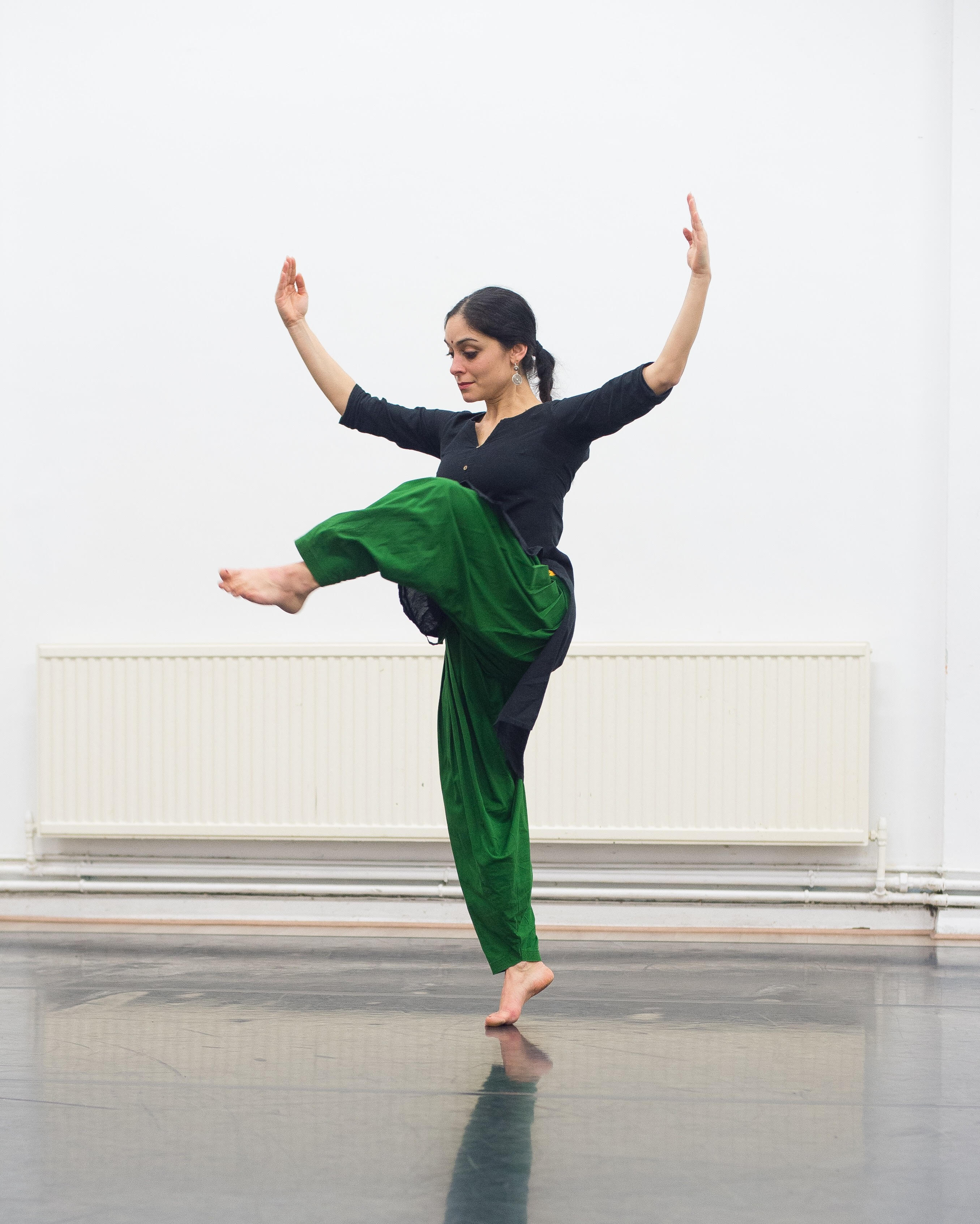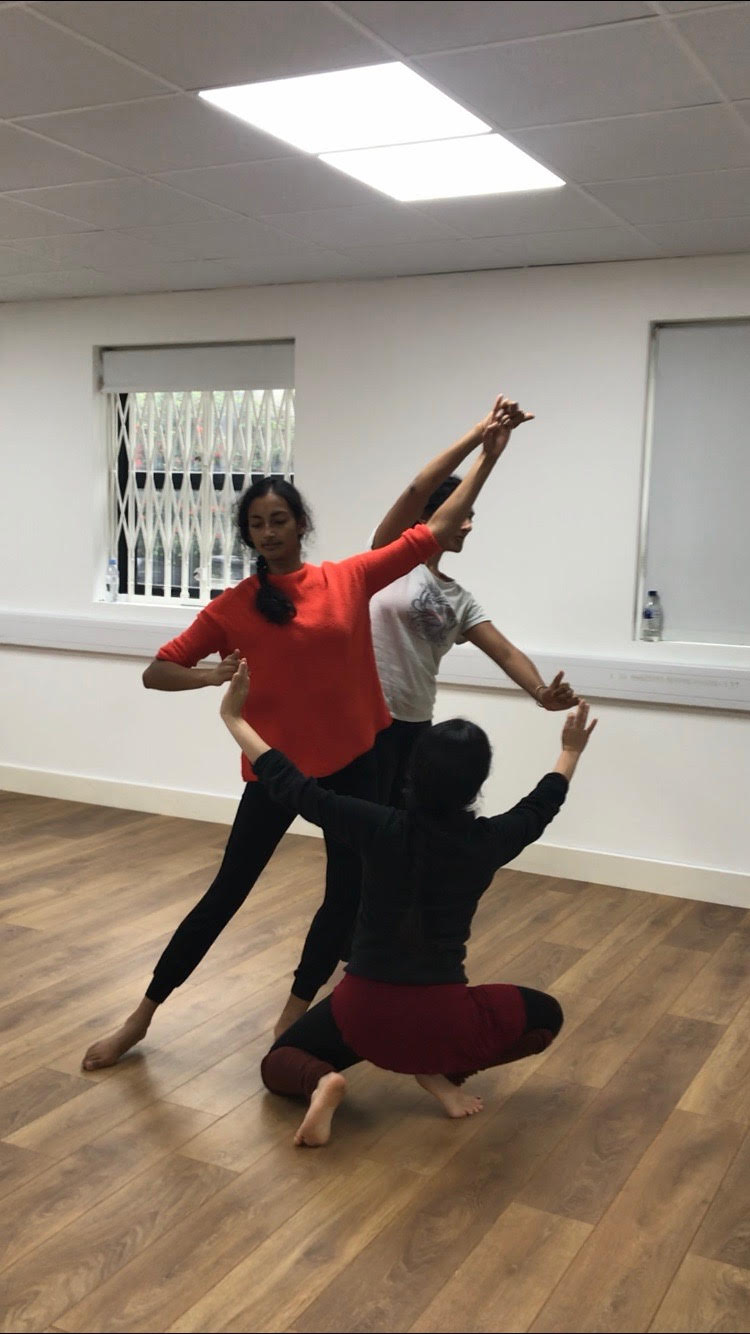Words by Katie Hagan.
They are the collective of classically trained dancers who have come together to expand people’s perceptions of what dance can be.
Comprising six dancers — two trained in Kathak, two Bharatanatyam and two Odissi — ReRooted Dance Collective use classical Indian dance styles as springboards for choreographic and conceptual expansion, rather than ends in themselves. Â
It is this freshness — combined with an assured reverence for, and not a negation of, traditional dance styles — which gives the collective’s choreography a skilful elusiveness. Neither Indian nor contemporary dance but an amalgamation somewhere between, ReRooted’s approach to movement-making imbues its choreography with an indescribable energy that doesn’t render the work hard to grasp, but alive and thriving.
The collective’s energy is, in part, a by-product of the way it creates movement. Choreography is crafted through a collective exchange of technique, personal experiences and ideas. As I observe rehearsals for ReRooted’s new body of solo and group work, Geometer, which debuts at Bloomsbury Festival this week, it is clear its environment is honest and safe.
Four members of the collective are in the studio with rehearsal director, Kamala Devam. Meera Patel (a Kathak dancer) is directing the work’s namesake, a trio comprising Shivaangee Agrawal (Bharatanatyam), Parbati Chaudhury (Kathak) and Elena Catalano (Odissi). Observing Meera she is directive, yet patient and flexible. She sees her ideas emerging before her yet isn’t afraid to a) untangle the complex bits and b) let go of what really isn’t working.
When I question ‘what are they doing differently?’ the dancers humbly answer they are not doing anything contemporary dance hasn’t done before. Parbati explains their existence is part of a natural stage within dance’s evolution. “None of these classical styles randomly popped up and came into being — they have all evolved.”
“Part of the expansion of dance styles is recognising our environments and experiences will feed into and shape these classical forms. We have to remember that we aren’t dancing classical Indian dance in India, and our work must reflect that.”
“But essentially we have come together with the intention to explore choreography,” explains Parbati. “Indian classical dance is traditionally handed down to you. You get to a level of seniority and then you are deemed old enough to choreograph. However, most of us have contemporary training where choreography is integral to your practice. In terms of Indian classical dances, we are suggesting it is worth expanding your choreographic practice whilst refining your technique, so the two evolve and inform one another.”

Shivaangee continues, “Peer learning is not an established method in Indian dance. Instead, there is usually a guru or teacher. In ReRooted we wanted to create space for another approach. We experimented with ‘co-working sessions’, which is, for us, a more collective choreographic process. We set tasks, bring in loads of concepts and use one another’s bodies to make work. We then watch and give feedback to develop the work and sustain the process.”
“It is so important to see the diversity within choreographic process!” Parbati expresses.
We then move on to how they are embodying classical Indian styles differently. Generally speaking, it is a well-known perception that form and technique can be restrictive. Painters, dancers and poets have all said it.
Many of these artists get a taste for anarchy and break away from form. Yet some risk being branded the dreadful p-word (pretentious) if they do it without real conviction. With this in mind, how is ReRooted different?
“We come with open tasks applicable to any technique and then explore this within our styles. Whilst some of the forms feature movement that is transferable, the point is to explore and experience new things together.” Parbati nods in agreement with Elena, explaining: “We start from our own bodies and then inspire each other. We embody an idea instead of projecting our technique onto one another.”
Continuing on the topic of the group’s practice, Elena explains: “We want to honour the roots and boundaries of classical dance, but shade them slightly to create something different.”
Elena ruminates on the collective’s processes to add: “We are constantly questioning what we are doing. Sometimes we get to the point where we ask ‘Does it matter if it feels like Odissi?’ Or it just worth pursuing as long as it feels honest?”
Meera continues, “My training is in Kathak, and I know little to nothing about Odissi technique. When I am creating work for Elena’s body, an Odissi dancer, I want to move away from the form but respect Elena’s body. I think it’s important to trust each other’s instincts and ask if what we are doing feels really honest.”
It is this respectful, sincere belief in the origins of classical dance which enables the collective to soften the boundaries that enclose traditional styles, rather than indulgently rupturing form just for the sake of it. Because where is the sense in that?
Although ‘questioning’ is a key component of the collective’s choreographic energy, what happens when their bodies and minds are trying to navigate movement that their forms do not use? How different does it feel? Shivaangee recognises the beauty within this difficulty: “I think for me if you are a ballet dancer and your body only knows how to hold itself upright, and you are asked to embody a spiral, you’re going to do it differently than let’s say a contemporary dancer who can undulate, for instance.”
“Sometimes, if your body has a greater vocabulary the integrity of that classical-ness is diluted because you’re moving in a way that is familiar. You’re not really asking your body to do something it isn’t programmed to do.”

As we end our conversation, I ask ReRooted about the main stimulus for Geometer. Meera explains: “Geometer actually began as a single solo piece which I made for Parbati earlier this year. I drew inspiration from a painting by Nazira Bibi, which invites discussion on geometry in Islamic art. Now, I am choreographing it as a group piece.”
“I guess the only difficulty we sometimes encounter is bridging the abyss between contemporary and classical forms. As Elena mentioned, we are constantly questioning ourselves! How do we make our classical forms more expressive?”
“It’s also our responsibility to broaden the expectations of our audiences, so they can see something they haven’t already witnessed. We create a careful blend of classical and what can be loosely termed contemporary dance. Yet an audience member in the past has previously thought we were very contemporary. Although their view is subjective, we want people to realise that what might seem to be ‘one thing’ is actually multiple and open to interpretation.”
“This group piece encompasses this bigger collection of work that we are exhibiting at the festival. It’s become a piece about venerated architecture and its relationship with the human condition. People over the years have used these great sites, such as the Parthenon, to get closer to higher energies and beings. And we are responding to these ideas through movement.”
“When we first came together we wanted to work on each other’s bodies. This approach is unusual in classical Indian dance. However, it felt like a natural and honest process so we decided to trust it. It’s going well so far; we are putting the piece together with Jesse Bannister’s music, and are excited to share our work and practice under Luke Jerram’s Museum of the Moon this week!”
ReRooted Dance Collective will perform Geometer under the moon in the Holy Cross Church at Bloomsbury Festival. Click here to get your ticket!
Images: Simon Richardson.
